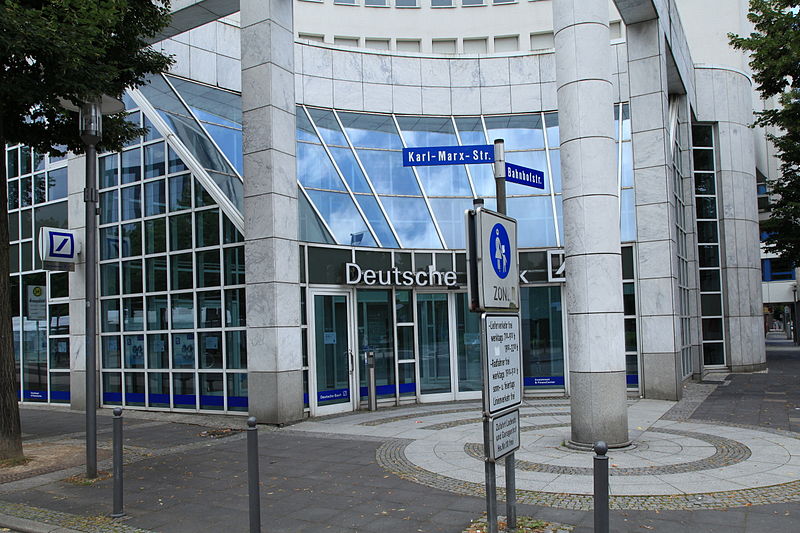In the III quarter of last year, an average return on equity in the largest banks (or those whose assets exceed $ 1 trillion) was only 7.9%, far below the profit of 15-20%, which they had before the financial crisis. If we exclude Chinese banks, the figure would collapse to 5.7%. Moreover, this is the rate of return they have been having for several years.
In response to this, the banks' management released a same type statement: withdrawal from a number of countries or specific lines of business, as well as additional staff reductions. For example, Barclays has promised to fire one thousand workers in its investment unit and close all offices in Asia.
More radical steps, such as division of banks on a much smaller, more focused and less regulated companies, are not even considered.
On the contrary, despite the investors’ dissatisfaction with the low income and the regulators’ insistence to systemic banks to reduce in size, the most powerful financial institutions in the world have not changed after the collapse of Lehman Brothers.
Eleven "behemoths" considered by the Financial Stability Board (FSB) as the most important for the global financial system, have reduced its assets to $ 22 trillion in 2008 to $ 20 trillion in 2015. At the time, assets of a broader group of 30 organizations that FSB qualifies as "global, systemically important banks" in recent years have become even bigger, says the British magazine The Economist.
Some investment banks, primarily in Europe, are reducing the area of their activity, focusing on segments where they have an undeniable advantage. Thus, UBS largely abandoned bond trading, currencies and commodities.
More and more financial institutions are leaving too risky and capital-intensive business (trade financial instruments) in favor of safer segments (assisting companies in raising capital and managing cash-rich investors).
General Electric, recently "bank within the company", has freed itself from majority of its financial assets last year. Credit Suisse is considering closure of the retail units in Switzerland, and Deutsche Bank sells Postbank - largest retail bank in Germany.
At the same time, financial institutions could do more. Many of them are trading below book value, which gives grounds to assume that they would be more valuable if atomized. Last year, Goldman Sachs analyst Richard Ramsden advised JPMorgan Chase to split into four independent units. Great American insurer MetLife is currently in the process of splitting, mainly to reduce required level of capital and thereby increase profits.
There is a certain "force of attraction" to a smaller size, according heads of banks included in the first ten of FSB. It is difficult to compete with non-systemic banks who have much lower capital adequacy ratio.
Meanwhile, there is no correlation between size and income. The most profitable banks are classified as "average performance", with assets of $ 50 billion to $ 1 trillion. Those who are more or less - less profitable.
Then what hinders large banks from becoming smaller? Potential risks and cost of the separation for large banks forced them to maintain the status quo. As another backbone bank explains, "Splitting would be a kind of adventure, and we are not paid for adventures."
At the same time, shareholders are increasingly expressing their discontent. Too cautious managers are being dismissed. Anshu Jain, who was nurturing investment arm of Deutsche Bank for over 20 years, was forced to leave the post of the bank’s co-chairman in June for being too slow in reorganization of their offspring.
His successor, John Cryan, a well-known supporter of spending cuts, reminded its employees to observe "a fair balance between the interests of staff and shareholders." This means less for employees and more for shareholders, what is fundamentally different from the trend existing in recent decades.
source: economist.com
In response to this, the banks' management released a same type statement: withdrawal from a number of countries or specific lines of business, as well as additional staff reductions. For example, Barclays has promised to fire one thousand workers in its investment unit and close all offices in Asia.
More radical steps, such as division of banks on a much smaller, more focused and less regulated companies, are not even considered.
On the contrary, despite the investors’ dissatisfaction with the low income and the regulators’ insistence to systemic banks to reduce in size, the most powerful financial institutions in the world have not changed after the collapse of Lehman Brothers.
Eleven "behemoths" considered by the Financial Stability Board (FSB) as the most important for the global financial system, have reduced its assets to $ 22 trillion in 2008 to $ 20 trillion in 2015. At the time, assets of a broader group of 30 organizations that FSB qualifies as "global, systemically important banks" in recent years have become even bigger, says the British magazine The Economist.
Some investment banks, primarily in Europe, are reducing the area of their activity, focusing on segments where they have an undeniable advantage. Thus, UBS largely abandoned bond trading, currencies and commodities.
More and more financial institutions are leaving too risky and capital-intensive business (trade financial instruments) in favor of safer segments (assisting companies in raising capital and managing cash-rich investors).
General Electric, recently "bank within the company", has freed itself from majority of its financial assets last year. Credit Suisse is considering closure of the retail units in Switzerland, and Deutsche Bank sells Postbank - largest retail bank in Germany.
At the same time, financial institutions could do more. Many of them are trading below book value, which gives grounds to assume that they would be more valuable if atomized. Last year, Goldman Sachs analyst Richard Ramsden advised JPMorgan Chase to split into four independent units. Great American insurer MetLife is currently in the process of splitting, mainly to reduce required level of capital and thereby increase profits.
There is a certain "force of attraction" to a smaller size, according heads of banks included in the first ten of FSB. It is difficult to compete with non-systemic banks who have much lower capital adequacy ratio.
Meanwhile, there is no correlation between size and income. The most profitable banks are classified as "average performance", with assets of $ 50 billion to $ 1 trillion. Those who are more or less - less profitable.
Then what hinders large banks from becoming smaller? Potential risks and cost of the separation for large banks forced them to maintain the status quo. As another backbone bank explains, "Splitting would be a kind of adventure, and we are not paid for adventures."
At the same time, shareholders are increasingly expressing their discontent. Too cautious managers are being dismissed. Anshu Jain, who was nurturing investment arm of Deutsche Bank for over 20 years, was forced to leave the post of the bank’s co-chairman in June for being too slow in reorganization of their offspring.
His successor, John Cryan, a well-known supporter of spending cuts, reminded its employees to observe "a fair balance between the interests of staff and shareholders." This means less for employees and more for shareholders, what is fundamentally different from the trend existing in recent decades.
source: economist.com






